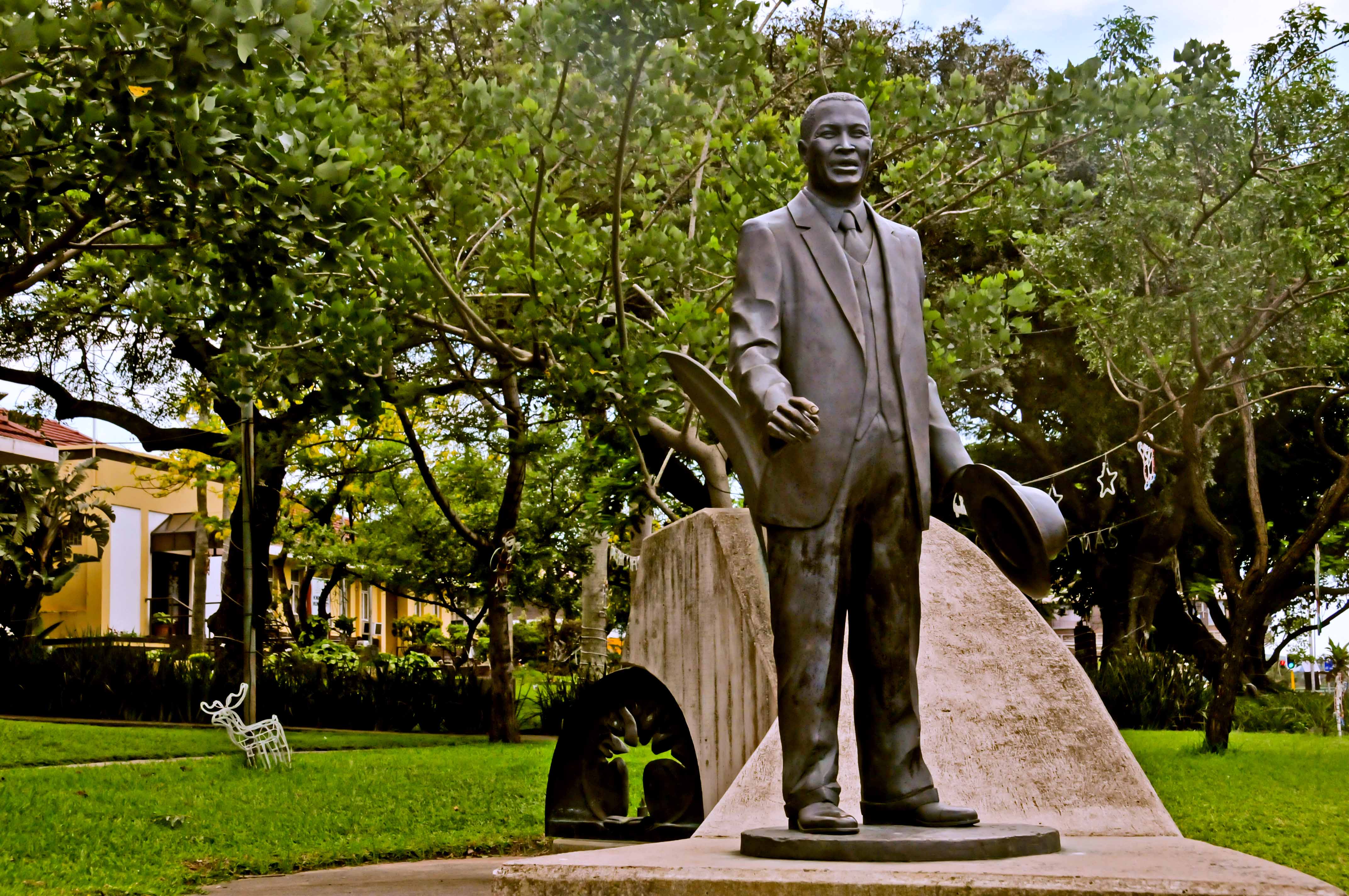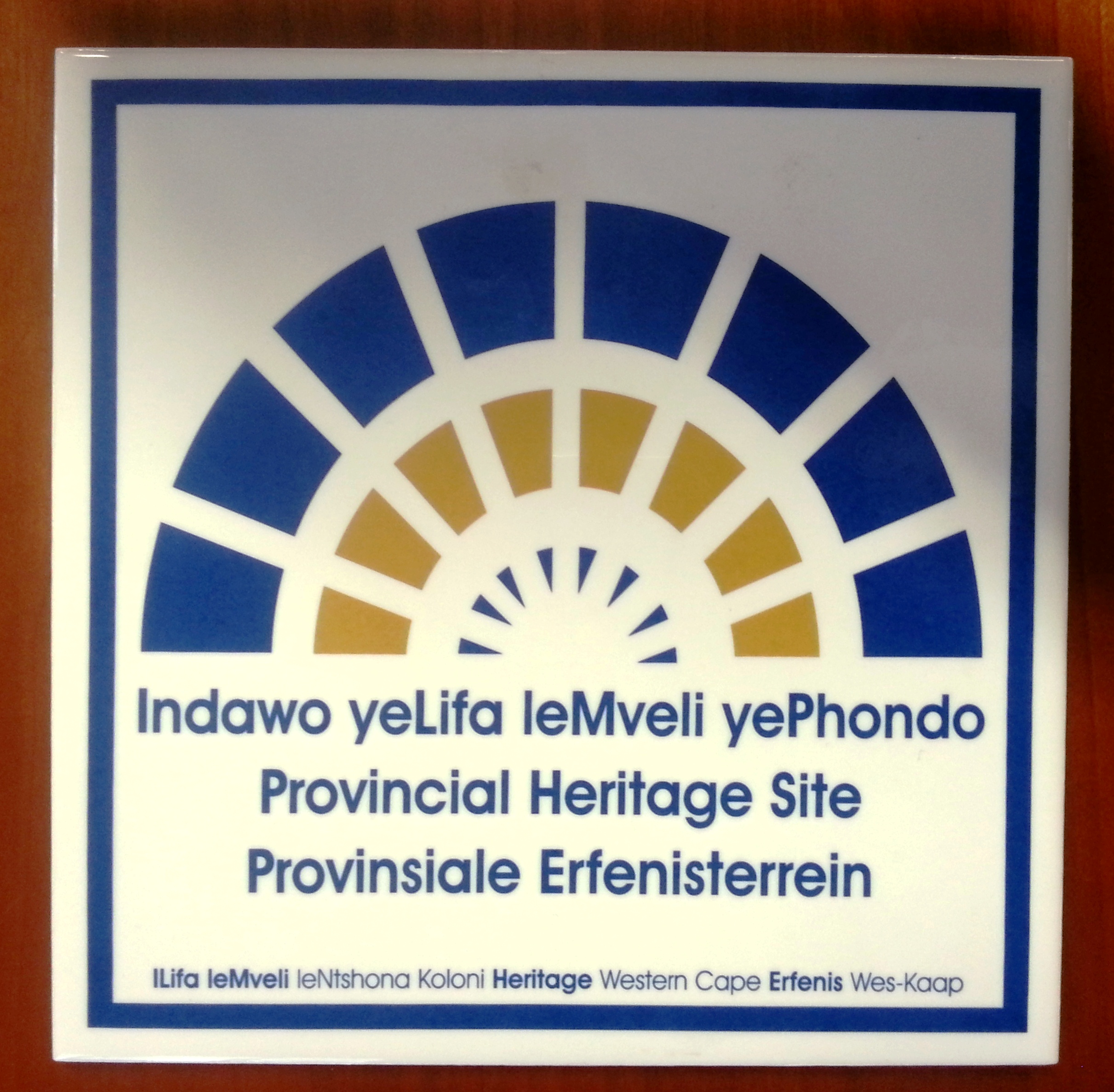|
Shaka Memorial
The Shaka Memorial is a provincial heritage site in Stanger in the KwaZulu-Natal province of South Africa. It marks the resting place of the Zulu King Shaka near the site where he was assassinated by his half-brothers Dingane and Mhlangana while sitting on a rock near the barracks at his capital Dukuza. According to the 1938 Government Gazette, the monument was made in Newcastle and erected in 1932 on the site of King Shaka's grave. Adjacent to the memorial is the rock on which King Shaka was alleged to be sitting at the time of his assassination Assassination is the murder of a prominent or important person, such as a head of state, head of government, politician, world leader, member of a royal family or CEO. The murder of a celebrity, activist, or artist, though they may not have a ... on 24 September 1828. It was rolled across the street from its original site to where it now lies. The date is commemorated by a gathering at the memorial in honour of King Shaka le ... [...More Info...] [...Related Items...] OR: [Wikipedia] [Google] [Baidu] |
KwaDukuza
KwaDukuza is a municipality in KwaZulu-Natal, South Africa. In 2006, the municipal name was changed to KwaDukuza (which incorporates small towns such as Stanger, Balito, Shaka's Kraal, but the Zulu people in the area called it "Dukuza" well before then. The city has been under major economical construction since 2015, having built a multi-million rand regional shopping mall in 2018. History The city was founded about 1820 by King Shaka and was named KwaDukuza ( zu, Place of the Lost Person) because of the capital's labyrinth of huts. After Shaka was assassinated on 22 September 1828 during a coup by two of his half-brothers, Dingane and Umthlangana (Mhlangane), the city was burnt to the ground. In 1873, European settlers built a town on the site, naming it Stanger after William Stanger, the surveyor-general of Natal. KwaDukuza became a municipality in 1949 under the name Stanger and is the commercial, magisterial and railway center of an important sugar-producing district. ... [...More Info...] [...Related Items...] OR: [Wikipedia] [Google] [Baidu] |
KwaZulu-Natal
KwaZulu-Natal (, also referred to as KZN and known as "the garden province") is a province of South Africa that was created in 1994 when the Zulu bantustan of KwaZulu ("Place of the Zulu" in Zulu) and Natal Province were merged. It is located in the southeast of the country, with a long shoreline on the Indian Ocean and sharing borders with three other provinces and the countries of Mozambique, Eswatini and Lesotho. Its capital is Pietermaritzburg, and its largest city is Durban. It is the second-most populous province in South Africa, with slightly fewer residents than Gauteng. Two areas in KwaZulu-Natal have been declared UNESCO World Heritage Sites: the iSimangaliso Wetland Park and the uKhahlamba Drakensberg Park. These areas are extremely scenic as well as important to the surrounding ecosystems. During the 1830s and early 1840s, the northern part of what is now KwaZulu-Natal was established as the Zulu Kingdom while the southern part was, briefly, the Boer Nata ... [...More Info...] [...Related Items...] OR: [Wikipedia] [Google] [Baidu] |
South Africa
South Africa, officially the Republic of South Africa (RSA), is the southernmost country in Africa. It is bounded to the south by of coastline that stretch along the South Atlantic and Indian Oceans; to the north by the neighbouring countries of Namibia, Botswana, and Zimbabwe; and to the east and northeast by Mozambique and Eswatini. It also completely enclaves the country Lesotho. It is the southernmost country on the mainland of the Old World, and the second-most populous country located entirely south of the equator, after Tanzania. South Africa is a biodiversity hotspot, with unique biomes, plant and animal life. With over 60 million people, the country is the world's 24th-most populous nation and covers an area of . South Africa has three capital cities, with the executive, judicial and legislative branches of government based in Pretoria, Bloemfontein, and Cape Town respectively. The largest city is Johannesburg. About 80% of the population are Black Sou ... [...More Info...] [...Related Items...] OR: [Wikipedia] [Google] [Baidu] |
Shaka
Shaka kaSenzangakhona ( – 22 September 1828), also known as Shaka Zulu () and Sigidi kaSenzangakhona, was the king of the Zulu Kingdom from 1816 to 1828. One of the most influential monarchs of the Zulu, he ordered wide-reaching reforms that re-organized the military into a formidable force. King Shaka was born in the lunar month of ''uNtulikazi'' (July) in the year of 1787 near present-day Melmoth, KwaZulu-Natal Province, the son of the Zulu King Senzangakhona kaJama. Spurned as an illegitimate son, Shaka spent his childhood in his mother's settlements, where he was initiated into an '' ibutho lempi'' (fighting unit), serving as a warrior under Inkosi Dingiswayo. King Shaka further refined the ''ibutho'' military system and, with the Mthethwa Paramountcy's support over the next several years, forged alliances with his smaller neighbours to counter Ndwandwe raids from the north. The initial Zulu maneuvers were primarily defensive, as King Shaka preferred to apply pressure ... [...More Info...] [...Related Items...] OR: [Wikipedia] [Google] [Baidu] |
Provincial Heritage Site (South Africa)
Provincial heritage sites in South Africa are places that are of historic or cultural importance within the context of the province concerned and which are for this reason declared in terms of Section 28 of the National Heritage Resources Act (NHRA) or legislation of the applicable province. The designation was a new one that came into effect with the introduction of the Act on 1 April 2000 when all former national monuments declared by the former National Monuments Council and its predecessors became provincial heritage sites as provided for in Section 58 of the Act. Both provincial and national heritage sites are protected under the terms of Section 27 of the NHRA or legislation of the relevant province and a permit is required to work on them. Provincial heritage sites are declared and administered by the relevant provincial heritage resources authority whilst national heritage sites are the responsibility of SAHRA. KwaZulu-Natal is the only province to have its own heritage ... [...More Info...] [...Related Items...] OR: [Wikipedia] [Google] [Baidu] |
Zulu People
Zulu people (; zu, amaZulu) are a Nguni people, Nguni ethnic group native to Southern Africa. The Zulu people are the largest Ethnic groups in South Africa, ethnic group and nation in South Africa, with an estimated 10–12 million people, living mainly in the province of KwaZulu-Natal. They originated from Nguni communities who took part in the Bantu migrations over millennia. As the clans integrated together, the rulership of Shaka brought success to the Zulu nation due to his improved military tactics and organization. Zulus take pride in their ceremonies such as the Umhlanga, or Reed Dance, and their various forms of beadwork. The art and skill of beadwork takes part in the identification of Zulu people and acts as a form of communication and dedication to the tribe and specific traditions. The men and women both serve different purposes in society in order to function as a whole. Today the Zulu people predominantly believe in Christianity, but have created a Religious s ... [...More Info...] [...Related Items...] OR: [Wikipedia] [Google] [Baidu] |
Dingane
Dingane ka Senzangakhona Zulu (–29 January 1840), commonly referred to as Dingane or Dingaan, was a Zulu chief who became king of the Zulu Kingdom in 1828, after assassinating his brother Shaka. He set up his royal capital, uMgungundlovu, and one of numerous military encampments, or kraals, in the Emakhosini Valley just south of the White Umfolozi River, on the slope of Lion Hill (''Singonyama''). Rise to power Dingane came to power in 1828 after assassinating his half-brother Shaka with the help of another brother, Umhlangana, as well as Mbopa, Shaka's bodyguard. They were traditionally said to have killed Shaka because of his increasingly brutal behaviour after the death of his mother, Nandi. The assassination took place at present-day Stanger. Governance and reverence Captain Gardiner related that Dingane was revered as the "great idol" of the Zulu nation, while Reverend Francis Owen, who observed his rule at close quarters while stationed at Umgungundhlovu, highl ... [...More Info...] [...Related Items...] OR: [Wikipedia] [Google] [Baidu] |
Umhlangana KaSenzangakhona
Mhlangana (died 1828) (also known as Umhlangana ka Senzangakhona) was a Zulu prince - the son of Senzangakhona, a brother of Shaka, and half-brother of Dingane and Mpande. He assisted Dingane and Shaka's induna (advisor) Mbopha in Shaka's assassination at Dukuza in 1828, and was himself assassinated by Dingane shortly afterwards. See also * List of Zulu kings 1828 deaths Zulu royalty 19th-century African people Regicides Year of birth unknown 1828 murders in Africa 19th-century murders in South Africa {{Africa-royal-stub ... [...More Info...] [...Related Items...] OR: [Wikipedia] [Google] [Baidu] |
Barracks
Barracks are usually a group of long buildings built to house military personnel or laborers. The English word originates from the 17th century via French and Italian from an old Spanish word "barraca" ("soldier's tent"), but today barracks are usually permanent buildings for military accommodation. The word may apply to separate housing blocks or to complete complexes, and the plural form often refers to a single structure and may be singular in construction. The main object of barracks is to separate soldiers from the civilian population and reinforce discipline, training, and ''esprit de corps''. They have been called "discipline factories for soldiers". Like industrial factories, some are considered to be shoddy or dull buildings, although others are known for their magnificent architecture such as Collins Barracks in Dublin and others in Paris, Berlin, Madrid, Vienna, or London. From the rough barracks of 19th-century conscript armies, filled with hazing and illness and ba ... [...More Info...] [...Related Items...] OR: [Wikipedia] [Google] [Baidu] |
Government Gazette Of South Africa
The ''Government Gazette'' ( af, Staatskoerant) is the gazette of record of South Africa. It is the "official organ of Government". The ''Government Gazette'' is used by the government as an official way of communicating to the general public. Published material The ''Gazette'' includes proclamations by the President as well as both general and government notices made by its various departments. It publishes regulations and notices in terms of acts, changes of names, company registrations and deregistrations, financial statements, land restitution notices, liquor licence applications and transport permits. Board and legal notices are also published in the ''Gazette''; these cover insolvencies, liquidation and estate notices. Note that certain publishers such as Juta and Butterworths publish legislation in South Africa. Location The current location of the government printing works is 149 Bosman Street, Pretoria, South Africa South Africa, officially the Republic of S ... [...More Info...] [...Related Items...] OR: [Wikipedia] [Google] [Baidu] |
Newcastle, KwaZulu-Natal
Newcastle is the third-largest city in the province of KwaZulu-Natal, South Africa. The city is KwaZulu-Natal's industrial centre. The majority of its citizens reside in Newcastle East in the main townships of Madadeni and Osizweni, with the balance residing in Newcastle West (the two sides of Newcastle are separated by the N11 Road). Set at the foothills of the northern KwaZulu-Natal Drakensberg Mountains, Newcastle is located in the northwest corner of the province along the Ncandu River. Newcastle is the seat of the local municipality as well as being the seat to the Amajuba District Municipality. Newcastle's municipal area is , ranking Newcastle as South Africa's tenth-largest city, and consists of 31 wards. The N11 and R34 are the principal roads linking the city to the rest of South Africa. History Toponymy Newcastle has changed names on numerous occasions during the country's historic rule. It was initially named Post Halt Number 2 on military maps during the 1 ... [...More Info...] [...Related Items...] OR: [Wikipedia] [Google] [Baidu] |





